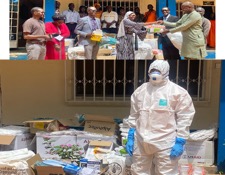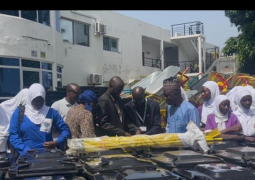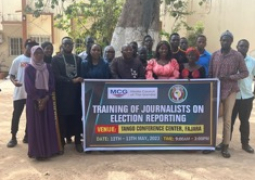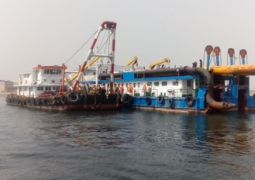
The Highly Pathogenic Avian Influenza (HPAI) type H5N1 has been confirmed in wild birds in The Gambia, following a joint investigation conducted by the Department of Parks and Wildlife Management (DPWM) of the Ministry of Environment, Climate Change and Natural Resources and the Department of Livestock Services of the Ministry of Agriculture. Reports show unusual deaths among wild birds in Tanji Bird Reserve, Kartong beach and Kotu Creek.
Presenting the equipment, Dr. Mustapha Ceesay, assistant FAO representative, said the materials are in line with FAO’s support to the government of The Gambia to enhance food security and nutrition in the area of crop and livestock production.
Dr. Ceesay reminded that bird flu is of international importance and the disease has no boundaries, further noting that it is only through efficient management programmes that the disease can be curtailed.
Also speaking, Ousman Ceesay, deputy Director General at the Department of Livestock Services, extended appreciation to the FAO describing the presentation as ‘timely’.
He thus assured that they would make the best use of them. “The equipment is the best ones we can use now to contain this Highly Pathogenic Avian Influenza (HPAI) type H5N1 also known as bird flu.”
Fatoumatta Jammeh, Deputy permanent Secretary at the Ministry of Agriculture, said the availability of the test kits and other field materials for the Department of Livestock Services could not have come at any better time than now, saying the equipment would help to save birds and contain the disease.
Highly Pathogenic Avian Influenza is also a major concern to public health officials and sporadic cases of avian influenza in humans are sometimes identified whenever avian influenza viruses circulate in poultry. With the current situation, the Department of Livestock Services, the Department of Parks and Wildlife and the Ministry of Health are closely working together to help reduce the infection pressure at the wild bird level while working with other key stakeholders to prevent the spillover to our poultry which subsequently will pose a more serious threat to public health.
Read Other Articles In National News





